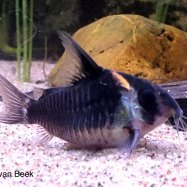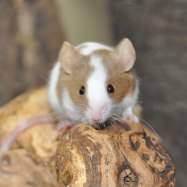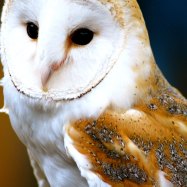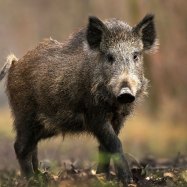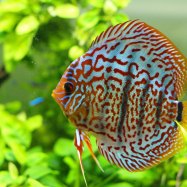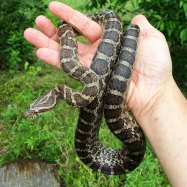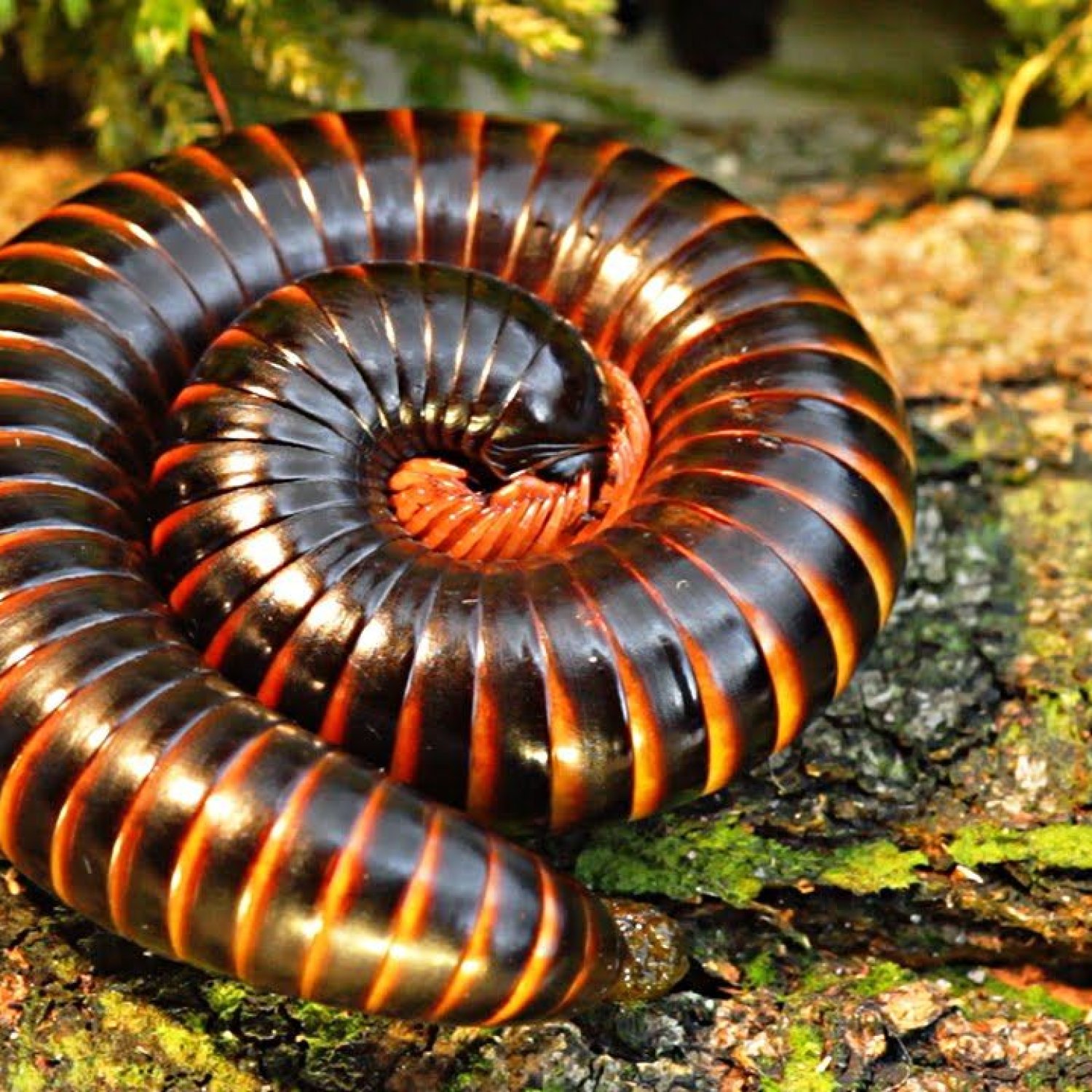
Millipede
1-12 inches
Millipedes are fascinating creatures found all around the world. Ranging from 1 to 12 inches in length, they have a cylindrical body shape and belong to various families. Despite their name, they do not have a thousand legs, but their numerous legs make them efficient scavengers. Encounter these gentle giants in various habitats. #Millipede #Animals #Wildlife
Animal Details Summary:
Common Name: Millipede
Kingdom: Animalia
Habitat: Terrestrial
The Fascinating World of Millipedes: Nature's Little Detritivores
When you think of an insect, most people imagine a small creature with six legs scurrying around on the ground. But what about those creatures with a seemingly endless number of legs? The ones that roll up into a spiral when disturbed? Yes, I'm talking about the humble millipede, a fascinating and often misunderstood creature that belongs to the class of Diplopoda.Millipedes, despite their name, do not actually have a thousand legs. The word "millipede" comes from the Latin word "mil," meaning a thousand, and "pes," meaning foot Millipede. In reality, most millipedes have around 100-400 legs, with the record holder being Illacme plenipes, a species found in California with a whopping 750 legs. But it's not just their legs that make them unique; millipedes have some incredible features that make them stand out in the animal kingdom.
The Classification and Distribution of Millipedes
Millipedes fall under the kingdom Animalia and are part of the phylum Arthropoda, making them invertebrates, animals without a backbone. They are also part of the class Diplopoda, which includes all millipedes and is the largest group within the Myriapoda subphylum. The name Diplopoda comes from the Greek words "di," meaning two, and "ploion," meaning foot.There are approximately 12,000 known species of millipedes, with new species being discovered all the time. They can be found in almost every part of the world, with the exception of Antarctica, making them one of the most widely distributed land animals. They have adapted to many different habitats, from deserts to rainforests, and can even be found in more extreme environments like caves and high mountain peaks.
The Physical Characteristics of Millipedes
Millipedes have a cylindrical body shape, with an elongated, segmented body that is divided into two parts, the head and the trunk Marble Fox. Each body segment can have one or two pairs of legs, depending on the species, earning them the name Diplopoda, meaning "double foot." Their legs are also covered in small hairs, giving them a velvety appearance.One of the most distinctive features of millipedes is their ability to curl up into a tight spiral when threatened. This action protects their vulnerable legs and soft underside, making it difficult for predators to attack. Some species even have the ability to secrete a foul-smelling fluid when threatened, which can irritate the skin of potential predators.
The Diet and Feeding Method of Millipedes
Millipedes are detritivores, meaning they feed on dead and decaying plant matter. They play a crucial role in the ecosystem by breaking down organic material, returning vital nutrients to the soil. As they move through the forest, they continuously feed on dead leaves and other plant debris, leaving behind tiny piles of fecal matter that enrich the soil.Their unique mouthparts, which are called mandibles, are designed to chop and grind their food into smaller pieces, making it easier to digest. Millipedes also have specialized structures on their legs called gnathochilarium, which helps them break down tougher plant material. These adaptations make them well-suited for their detritivore diet.
The Beauty of Millipede Coloration
While some may think of millipedes as dull and uninteresting in appearance, these creatures actually come in a wide range of colors, patterns, and shapes. They can be black, brown, red, or even brightly colored with intricate patterns, making them a sight to behold. Some species also have fluorescent markings, which they use to communicate with mates or to ward off predators.Unique Behaviors and Reproduction of Millipedes
Despite their many legs, millipedes are relatively slow-moving animals, relying on their many legs for stability and balance rather than speed. They also have a unique way of moving, using a "wave-like" motion of their legs to propel themselves forward. This method of locomotion makes them more efficient when navigating through leaf litter or other ground debris.When it comes to reproduction, millipedes have a unique courtship ritual that involves the male depositing a tiny packet of sperm known as a spermatophore, which the female then takes and stores in her body. The female will then lay fertilized eggs, which hatch into small, white larvae. These larvae go through a series of molts before reaching their adult form, with some species taking up to ten years to reach maturity.
The Importance of Millipedes in the Ecosystem
While millipedes may not be the most glamorous creatures, they play an essential role in the ecosystem. As detritivores, they help to breakdown and recycle nutrients in the soil, making them critical for maintaining a healthy environment. They also provide food for other animals such as birds, amphibians, and small mammals, making them a crucial part of the food chain.Additionally, millipedes have also been used for their medicinal properties in traditional medicine. The chemicals secreted by some species have been found to have antibacterial, antifungal, and anti-inflammatory properties, making them useful for treating different ailments.
The Threats Facing Millipedes
Despite their crucial role in the ecosystem, millipedes are facing various threats that could potentially impact their populations. Habitat loss due to deforestation and urbanization is a significant concern for many species, especially those with highly specific habitat requirements. They are also considered a pest in some agricultural areas, leading to the use of pesticides, which can harm their populations.In Conclusion
Millipedes may have a bad reputation due to their unusual appearance and many legs, but they are fascinating creatures with unique adaptations that make them well-suited for their detritivore lifestyle. Through their slow but steady movements, they contribute to maintaining the balance of the environment, making them an essential part of our ecosystem. So, the next time you come across a millipede on your outdoor adventures, take a moment to appreciate these tiny but essential creatures.

Millipede
Animal Details Millipede - Scientific Name: Diplopoda
- Category: Animals M
- Scientific Name: Diplopoda
- Common Name: Millipede
- Kingdom: Animalia
- Phylum: Arthropoda
- Class: Diplopoda
- Order: Various
- Family: Various
- Habitat: Terrestrial
- Feeding Method: Detritivore
- Geographical Distribution: Worldwide
- Country of Origin: Not applicable
- Location: Various
- Animal Coloration: Varies
- Body Shape: Cylindrical
- Length: 1-12 inches

Millipede
- Adult Size: Varies
- Average Lifespan: 2-7 years
- Reproduction: Sexual
- Reproductive Behavior: Mating
- Sound or Call: No
- Migration Pattern: No
- Social Groups: Solitary
- Behavior: Slow-moving
- Threats: Predators, habitat destruction
- Conservation Status: Not assessed
- Impact on Ecosystem: Detritus decomposition
- Human Use: None
- Distinctive Features: Numerous legs, hard exoskeleton
- Interesting Facts: Millipedes are not actually insects, they are more closely related to crustaceans. They have two pairs of legs on most of their body segments, giving them the appearance of having numerous legs. Some species of millipedes can produce toxic compounds to defend themselves against predators.
- Predator: Birds, reptiles, amphibians, mammals
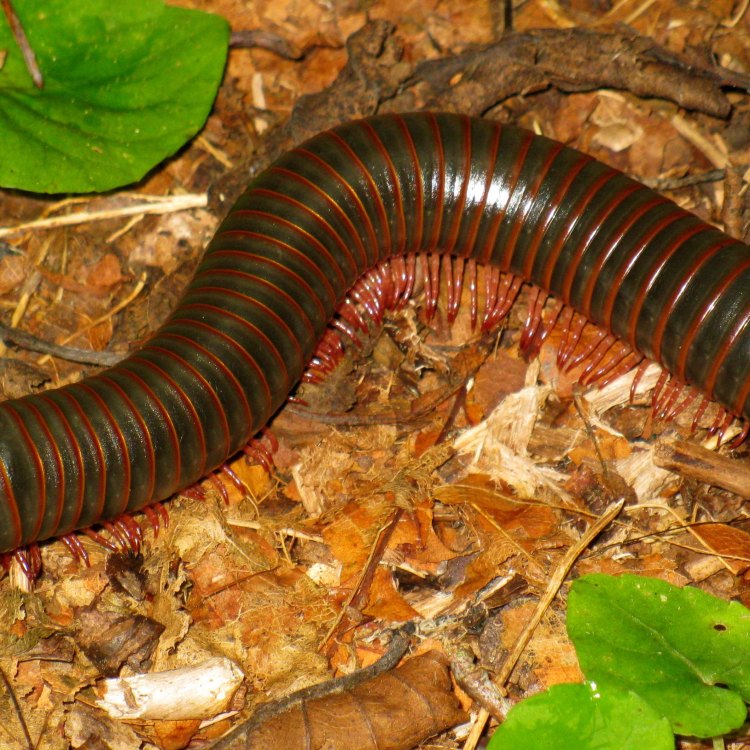
Diplopoda
The Mysterious World of Millipedes: Fascinating Facts and Features
Deep in the undergrowth of forests, amongst the fallen leaves and decaying plant matter, lives a creature that may not be commonly seen, but holds many secrets. Sluggish yet intriguing, with numerous legs and a hard exoskeleton, the millipede is a unique arthropod that has captured the curiosity of many. From its distinctive features to its important role in the ecosystem, these creatures continue to fascinate researchers and nature enthusiasts alike. In this article, we will delve into the mysterious world of millipedes, and discover the interesting facts and features that make them stand out in the animal kingdom PeaceOfAnimals.Com.Anatomy and Behavior
Millipedes, scientifically known as Diplopoda, are land-dwelling invertebrates that belong to the phylum Arthropoda. Unlike the commonly known insects, millipedes are actually more closely related to crustaceans, such as crabs and lobsters. They have a segmented body, consisting of a head, thorax, and abdomen, and can vary in size from a few millimeters to several inches long. Their average lifespan is between 2 to 7 years, depending on the species and environmental factors.
One of the most distinctive features of millipedes is their numerous legs. Despite their name, they do not actually have a thousand legs, but can have anywhere from 30 to 400 legs depending on the species. These legs are attached to most of their body segments, giving them the appearance of having numerous legs. This unique feature not only helps them to move, but also serves as a defense mechanism against predators.
Millipedes move slowly, with a wave-like motion, using their legs to grip onto surfaces Mexican Mole Lizard. They are typically slow-moving and solitary creatures, but may gather in groups for mating or to avoid extreme weather conditions. Speaking of mating, millipedes reproduce sexually and have a unique courtship ritual. The male will produce a bundle of sperm, called a spermatophore, which is picked up by the female through her genital opening. The eggs are then laid in the soil, where the young millipedes will hatch.
Human Interaction
Unlike many other species in the animal kingdom, millipedes do not have any direct impact on humans. They do not cause damage to crops or carry disease, and are not used for any human purposes. In fact, they are rarely seen by most people, as they prefer to live in dark and damp environments. However, humans do have an indirect impact on these creatures through habitat destruction. As they rely on decaying plant matter for food, any destruction of their habitat can greatly affect their survival.
Distinctive Features
Aside from their numerous legs, millipedes are also known for their distinctive hard exoskeleton. This serves as protection against predators, as well as helping to retain moisture in their bodies. The exoskeleton is made up of chitin, a strong and flexible material that is also found in the shells of crustaceans and insects. As the millipede grows, it must shed its exoskeleton in a process called molting. This allows for the growth of a new, larger exoskeleton to accommodate its increasing size.
Another interesting feature of millipedes is their ability to secrete toxic compounds. When faced with a predator, many species of millipedes will curl into a ball and release a foul-smelling fluid from pores in their exoskeleton. This fluid contains a compound called hydrogen cyanide, which can be harmful to predators such as birds, reptiles, and mammals. While this defense mechanism may not be effective against all predators, it serves as a warning to potential attackers.
The Millipede's Role in the Ecosystem
Millipedes may not be the most glamorous creatures in the animal kingdom, but they play a vital role in maintaining the balance of ecosystems. As detritivores, they feed on decaying plant matter, breaking it down and returning essential nutrients to the soil. This process is crucial for nutrient cycling and the growth of new plants, making millipedes an important link in the food chain. Without them, the buildup of dead plant matter would greatly affect the health of ecosystems.
Threats and Conservation Status
While millipedes are not currently assessed for conservation status, they do face threats in their natural habitats. Habitat destruction, as mentioned earlier, is a major threat to their survival. Human activities such as deforestation, pollution, and urbanization can greatly impact their living environments. Additionally, some species are at risk due to over-collection for scientific research and the pet trade.
As with many other species, the conservation of millipedes can also be achieved through the conservation of their habitats. Proper management and protection of forests and other natural habitats are essential for the survival of these creatures.
Interesting Millipede Facts
- Despite their name, millipedes do not actually have a thousand legs.
- Some species of millipedes can grow up to 11 inches in length.
- They are nocturnal creatures, preferring to come out at night.
- Millipedes do not have eyes, but have sensory organs to detect light and dark.
- They are one of the oldest land-dwelling creatures, with fossil records dating back over 400 million years.
- Some species can produce a bioluminescent glow, used for communication and attracting mates.
- Millipedes are natural recyclers, helping to break down dead plant matter and return nutrients to the soil.
In Conclusion
Millipedes may not be the most charismatic creatures, but they certainly have many unique features and play an important role in the ecosystem. From their numerous legs and hard exoskeleton to their ability to produce toxic compounds, these creatures have been fascinating scientists and nature enthusiasts for centuries. As we continue to learn more about these mysterious creatures, it is important to also work towards their conservation and the preservation of their habitats. With proper management and conservation efforts, we can ensure the survival of these intriguing creatures for generations to come.
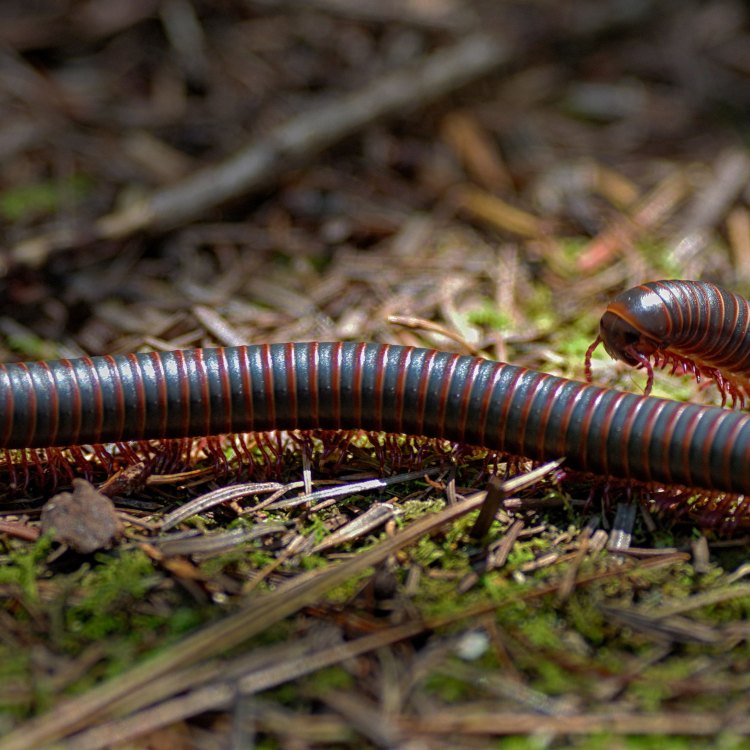
The Fascinating World of Millipedes: Nature's Little Detritivores
Disclaimer: The content provided is for informational purposes only. We cannot guarantee the accuracy of the information on this page 100%. All information provided here may change without prior notice.

